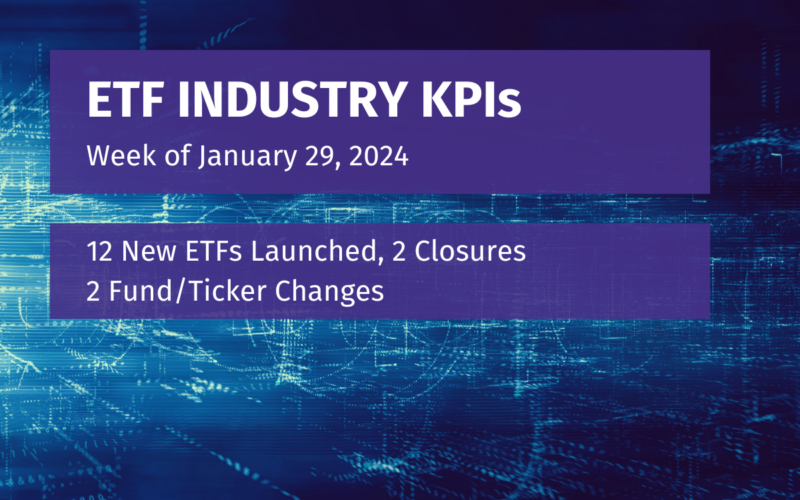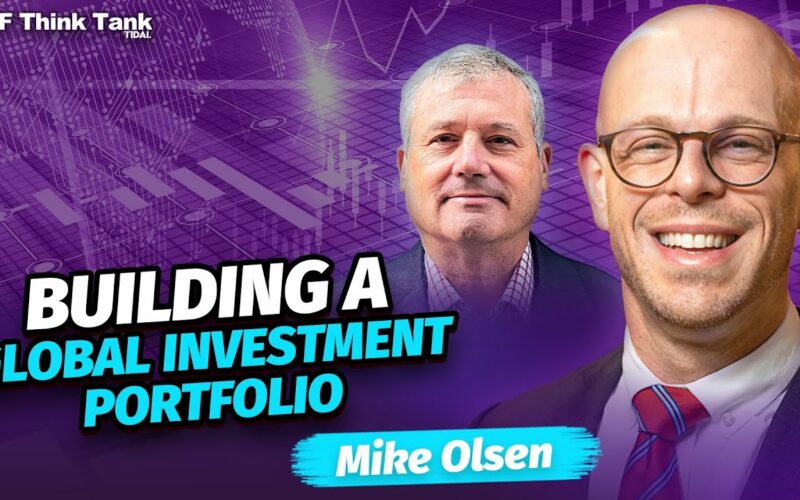With questions surrounding the strength of the labor market, the direction the Fed will take this year and investors’ overreliance on the “magnificent 7” stocks in their portfolios, it’s a good time to step back and take stock of the current economic landscape. Michael Kantrowitz, the chief investment strategist at Piper Sandler, has been covering the global macro environment for 20 years and joins the ETF Think Tank to offer his current lay of the land.
From a 30,000 foot view of the economy, Kantrowitz explains that he tends to be more selective. Last year, he had a bearish view of the markets expecting a recession was coming, but admits his view was wrong. He put aside his original view when he saw the markets only reacting to the direction of bond yields. While he expected growth and earnings to moderate, he didn’t believe bond yields would move significantly higher and that facilitated a more bullish view. He says that the market has priced in a soft landing, which he believes is confirmed by current high P/E ratios and low credit spreads. In terms of his near-term outlook, he thinks that unless we see a significant deterioration in the labor market, stocks probably have a floor underneath them.
Today, he still sees a slowdown in earnings growth and some weaknesses building in the jobs market. That, in his opinion, favors a more quality-focused theme. As the macro data weakens, earnings get revised lower and there are fewer improvements in earnings expectations, investors are likely to focus on more durable and dependable companies. His company has added a free cash flow component to its research in order to tilt in this direction. Kantrowitz notes that Powell said this past week that he would cut rates quicker if the employment situation deteriorates. That too would make the case for quality.
One of the problems he’s seen over the past couple of years is the positive correlation between stocks and bonds, which has negated the ability of investors to diversify. Kantrowitz says that interest rate sensitive stocks, such as homebuilders and financials, were one way his company positioned itself in this regard. They pulled back on that somewhat when the market began pricing in seven rate cuts in 2023. He says that we really don’t see that kind of outlook unless employment has really cracked. That’s why he thinks the Fed likely won’t loosen conditions nearly that much.
One of the biggest threats to further stock market gains, in Kantrowitz’s opinion, is where we are with earnings expectations and risk premiums. He says that high earnings expectations and little risk being priced into the market really isn’t the place where you see big stock rallies begin. Earnings usually get more pessimistic over time and he doesn’t see a broad improvement in earnings expectations right now. That’s the one thing you need to see and it’s not currently in place.
Kantrowitz uses the acronym “HOPE” to lay the framework for his research process, which stands for “housing, orders, profits and employment”. You don’t necessarily need to see all of these break down in order to get a recession, but these are the four key drivers he looks at. Right now, we’re not seeing a recession because the “E” isn’t contracting. Right now, the housing data is bouncing because the Fed has stopped hiking. Manufacturing has been struggling for a while, but new orders have actually started expanding again. The profit picture is still mixed. Employment data as a whole has been mixed. You can cherry pick the data to craft a narrative, but he keeps coming back to the fact that earnings haven’t broadly improved. He thinks we could be in this macro purgatory for many more months.
Other key takeaways:
- Kantrowitz says his companies used financials as something of a bond proxy in 2023 and still is to some degree.
- Corporate earnings may cause more problems at the individual level. If a company has relied on pricing power to improve revenues, they’re probably going to start struggling now.
- The reason that small-caps have struggled so much recently is because everything has been macro and P/E driven. Earnings estimates have gone sideways instead of up and he doesn’t see an imminent turnaround.
- Companies buying back shares tend to be outperformers over time, not because they’re buying back but because they have the cash to do it. There are things that investors are looking for today besides just earnings growth and shareholder payments are one of them.
- COVID has made it more important to corroborate data. Companies and governments may report data on their end, but Kantrowitz likes to look at the other end of the equation to make sure that it matches. For example, do export numbers from one country match up with imports for another.
- Of the top 50 performing stocks last year, the weakest was actually up about 35%. You could have expanded just beyond that magnificent 7 and made money, but the commonality among them was that they all fell into one of these buckets – improved profitability, earnings growth or earnings revisions.
Disclosure
All investments involve risk, including possible loss of principal.
The material provided here is for informational purposes only and should not be considered an individualized recommendation or personalized investment advice. The investment strategies mentioned here may not be suitable for everyone. Each investor needs to review an investment strategy for his or her own particular situation before making any investment decision.
All expressions of opinion are subject to change without notice in reaction to shifting market conditions. Data contained herein from third-party providers is obtained from what are considered reliable sources. However, its accuracy, completeness, or reliability cannot be guaranteed.
Examples provided are for illustrative purposes only and not intended to be reflective of results you can expect to achieve.
The value of investments and the income from them can go down as well as up and investors may not get back the amounts originally invested, and can be affected by changes in interest rates, exchange rates, general market conditions, political, social, and economic developments, and other variable factors. Investment involves risks including but not limited to, possible delays in payments and loss of income or capital. Neither Tidal nor any of its affiliates guarantees any rate of return or the return of capital invested. This commentary material is available for informational purposes only and nothing herein constitutes an offer to sell or a solicitation of an offer to buy any security and nothing herein should be construed as such. All investment strategies and investments involve risk of loss, including the possible loss of all amounts invested, and nothing herein should be construed as a guarantee of any specific outcome or profit. While we have gathered the information presented herein from sources that we believe to be reliable, we cannot guarantee the accuracy or completeness of the information presented and the information presented should not be relied upon as such. Any opinions expressed herein are our opinions and are current only as of the date of distribution, and are subject to change without notice. We disclaim any obligation to provide revised opinions in the event of changed circumstances.
The information in this material is confidential and proprietary and may not be used other than by the intended user. Neither Tidal nor its affiliates or any of their officers or employees of Tidal accepts any liability whatsoever for any loss arising from any use of this material or its contents. This material may not be reproduced, distributed, or published without prior written permission from Tidal. Distribution of this material may be restricted in certain jurisdictions. Any persons coming into possession of this material should seek advice for details of and observe such restrictions (if any).












